Discover Spain: A Heaven for Retirees
Spain continues to attract retirees globally with its warm climate, rich cultural tapestry, and excellent quality of life. Spain’s comparatively low cost of living (see our Affordability overview) and robust healthcare system (read our Healthcare guide) make it especially attractive.” The nation's appeal spans from the historic and cosmopolitan streets of Madrid, with its prestigious museums and landmarks, to the serene coastal retreats in Málaga.
Urban and Coastal Living:
In Madrid, the bustling capital, retirees enjoy a vibrant urban lifestyle amidst iconic sites such as the Prado Museum and the Royal Palace. Conversely, cities like Málaga offer a tranquil coastal experience, where the Mediterranean lifestyle can be savored alongside stunning beaches and lively local culture.
Leisure and Recreation:
The Costa del Sol is renowned for its world-class golf courses, making it a prime destination for golf enthusiasts. Nature lovers will find their paradise hiking in the majestic Pyrenees Mountains or exploring the charming villages of Andalucía.
Relaxation and Comfort:
For those seeking relaxation, Spain's numerous resorts and sandy shores along the Mediterranean provide the perfect escape. The cost of living in Spain is comparatively low, allowing for a comfortable lifestyle that is complemented by a robust healthcare system and well-developed infrastructure.
The local culture is warm and welcoming, making it easy for retirees to integrate and feel at home. Spain’s blend of modern amenities and rich traditions creates an ideal setting for a fulfilling retirement.

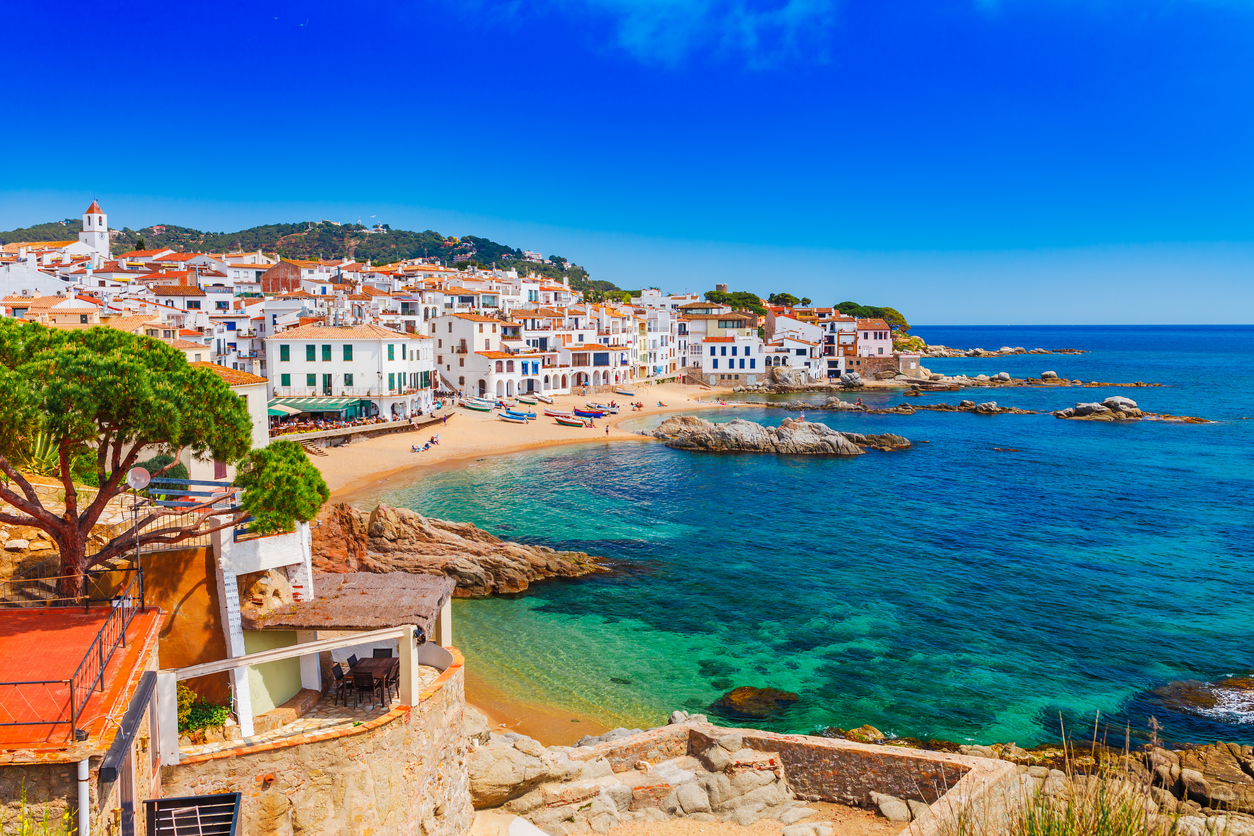

Visa Requirements
Retiring in Spain requires securing a non-lucrative visa, which permits non-EU citizens from the U.S. and Canada to reside in the country without engaging in paid employment. To qualify, applicants must demonstrate proof of sufficient financial resources to sustain themselves, typically through pensions, investments, or savings, and must obtain private health insurance or demonstrate access to healthcare through bilateral agreements. See our full Visa Eligibility breakdown for all European countries.
Application Process:
- Documentation: The application requires a variety of documents including a police clearance certificate, a medical certificate confirming you don't suffer from public health threat diseases (as per the 2005 International Health Regulations), and proof of accommodation in Spain.
- Financial Requirements: You must prove you have the financial means to support yourself without working. This is often verified through bank statements, retirement accounts, or income declarations.
- Health Insurance: Applicants must have comprehensive health insurance from an authorized company in Spain.
- Application Submission: The visa application must be submitted in person or via an authorized representative at the Spanish consulate in the applicant's home country. Applicants need to book an appointment at the consulate specific to their jurisdiction. Here is a link to find your relevant Spanish consulate based on your state of residence in the U.S. or province in Canada.
- Fees: The application fees vary and should be confirmed with the consulate, but expect to pay around $100-200 with additional fees depending on nationality due to reciprocity reasons.
Renewal and Permanent Residency:
The visa allows an initial one-year stay, renewable for up to five years, after which retirees may apply for permanent residency or citizenship.
Additional Resources:
For more detailed information and to start your application, visit the official Spanish embassy in the United States website. Here, you can also find specific links to download the required forms and get detailed instructions for your application.

Qualify for a Passport
To qualify for a Spanish passport, retirees typically aim to obtain Spanish citizenship, which is possible after maintaining permanent residency. The primary pathway to citizenship is through long-term residency: non-EU citizens generally need to reside in Spain for ten uninterrupted years under valid visas, such as the non-lucrative visa.
Expedited Citizenship for Family Ties and Special Cases:
Individuals with family ties to Spain, such as having grandparents or parents who are Spanish citizens, may qualify for citizenship after just one or two years of residency. Additionally, spouses of Spanish nationals, descendants of Sephardic Jews, and citizens from certain Latin American countries can benefit from reduced residency periods. Once the residency requirements are met, applicants must demonstrate basic Spanish language skills and integration into Spanish society, evidenced through an exam and interviews.
Schengen Area Explained:
The Schengen Area is a zone in Europe where 26 countries have abolished passport and other types of border control at their mutual borders. It includes most EU countries and a few associated non-EU countries. Residents of these countries enjoy the freedom to travel, work, and live in any other Schengen country without additional formalities. Spain is a part of the Schengen Area, which means that a passport from any Schengen country allows you to reside in Spain under the same conditions as other EU nationals.
Benefits for EU/Schengen Passport Holders:
Holding a passport from any EU or Schengen country simplifies moving to Spain significantly. These passport holders can reside in Spain without the need for the residency visas required for non-EU citizens. This is due to the right of free movement granted to EU and Schengen nationals, which includes the right to live and work in any EU country, including Spain.
By having a passport from a Schengen country, you essentially have the freedom to establish residency in Spain without going through the standard visa processes, accelerating your path to permanent residency and eventually citizenship if desired.
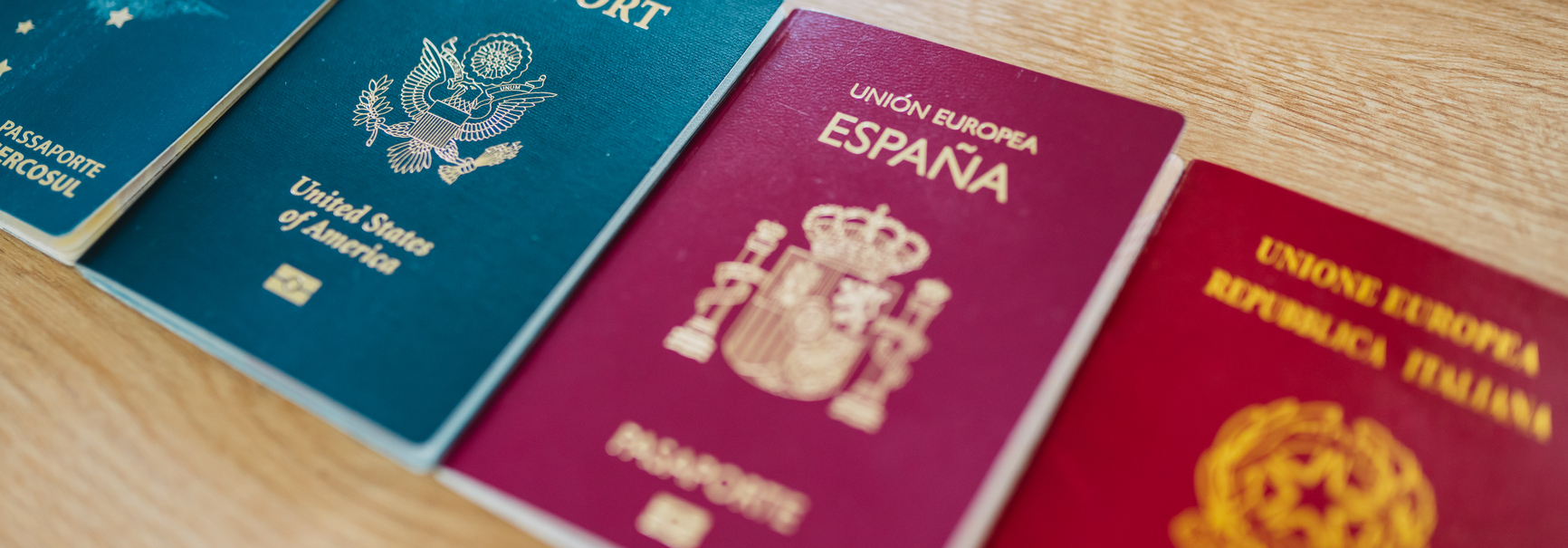
Health Insurance
To retire in Spain as a non-EU citizen, securing appropriate health insurance is crucial. The Spanish consulates require health insurance that provides comprehensive coverage equivalent to that offered by the Spanish public health system.
Key Requirements:
- The insurance must not include deductibles or co-payments.
- It should cover all risks insured by Spain's public health system.
- The policy must be valid for at least one year and cover the entire period of the visa.
- Travel insurance with medical coverage is not accepted as a substitute.
Since most non-lucrative visa applicants are generally ineligible for public healthcare, private health insurance is necessary. It is imperative to contract an insurance policy with a company authorized to operate in Spain.
Choosing the Right Insurance:
Ensure that your policy provides complete coverage as required by the consulate to avoid potential issues during the visa application process. When applying for your visa, you will need to provide an original and a copy of the certificate from your insurance provider confirming the coverage.
Working with insurance providers or brokers who are familiar with the requirements of the Spanish consulate can ensure compliance and smooth processing of your application. For more detailed information on compliant health insurance options, visit the Ministerio de Asuntos Exteriores.
Cost of Living
The cost of living in Spain is relatively moderate compared to other Western European countries, making it an appealing destination for retirees. As illustrated in the graph, monthly expenses can be broken down into several key categories. Housing tends to be the most significant expense, particularly in major cities like Madrid and Barcelona, though it is noticeably lower in smaller towns and rural areas. Groceries and dining out offer good value for money, reflecting Spain's abundance of fresh, local produce. Utilities are reasonably priced but can vary with the season, particularly for heating costs in winter. Public transportation is both extensive and affordable, supporting an active lifestyle. Entertainment and leisure activities, such as attending cultural events or dining out, also contribute to a higher quality of life without a steep cost. Lastly, healthcare, while of high quality, remains affordable due to the efficient public health system supplemented by reasonably priced private health insurance, essential for non-EU retirees. Together, these factors make Spain a cost-effective and enjoyable retirement option. If you’re also curious about how Portugal and Italy compare on cost, check out our Retire in Portugal and Retire in Italy guides
Population
Spain, with a population of approximately 47 million people, is characterized by a varied population density across its regions. The country has an average population density of around 94 people per square kilometer, which is relatively low compared to many other European nations. The most densely populated areas include major cities such as Madrid and Barcelona, where urbanization and economic opportunities attract large numbers of residents. In contrast, rural areas, particularly in regions like Castilla y León, Extremadura, and Aragón, experience much lower population densities. Coastal areas, particularly in the Mediterranean and the Balearic and Canary Islands, also see higher population densities due to their popularity among both locals and foreign residents, especially retirees and tourists.
Transportation
Traveling to Spain from US/Canada
Direct flights from the US and Canada to Spain make it convenient for retirees to travel between these countries. Major airlines operate frequent flights to cities like Madrid, Barcelona, and Malaga. Check the links below for more details on airlines and flight frequency:
- Iberia - Connects various US locations, including New York, Miami, Chicago, Boston, San Francisco and Los Angeles directly with Spain.
- American Airlines - Offers direct flights from major US cities to Madrid and Barcelona.
- Air Canada - Provides direct services from cities like Toronto and Montreal to Spanish destinations.
Exploring Spain and Beyond
Spain boasts an extensive travel infrastructure, facilitating easy exploration across the country and to neighboring European nations. The integrated network of air, train, and bus services offers seamless travel possibilities:
- Air Travel: Domestic flights connect major cities and tourist destinations within Spain swiftly.
- Train Travel: Renfe, the national railway, offers high-speed train services (AVE) connecting major cities in hours. The scenic routes are an added bonus. For more information on schedules and tickets, visit Renfe's official website
- Bus Travel: Extensive bus networks cover even the most remote areas, offering an economical way to travel.
Additionally, Spain's location allows easy access to other European countries, making it an ideal base for further exploration.
Activities for Retirees in Spain
Spain offers a wide array of activities suitable for retirees, encompassing serene marina visits, lush golf courses, delectable dining, enriching museum tours, relaxing cruises, and cultural events.
Marinas and Cruises
Enjoy the serene beauty of Spain's numerous marinas or take a leisurely cruise along the Mediterranean coast. Explore popular marinas like Puerto Banus in Marbella or Puerto Portals in Mallorca, known for their high-end facilities and vibrant local scenes. More information can be found on their respective websites Port de Mallorca and Puerto Banus.
Golf Courses
Spain is renowned for its world-class golf courses. The Costa del Sol and the Canary Islands are particularly famous, offering stunning greens and a perfect climate for golfing. You can find more details on specific courses and locations at Top 100 Golf Courses.
Food and Restaurants
Spain's culinary scene offers a rich array of options from traditional tapas bars to Michelin-starred restaurants. Explore local cuisines and sophisticated dining experiences across the country. Learn more about Spain's top restaurants at Michelin Guide.
Museums and Cultural Sites
Delve into Spain's rich history and culture at its numerous museums. The Prado Museum in Madrid and the Guggenheim Museum in Bilbao are must-visits for art lovers. Discover more about these cultural sites at Museo del Prado and Guggenheim Museum.
Events and Festivals
Engage with local culture through various festivals and events geared towards a more mature audience. Enjoy jazz festivals, wine tastings, and other leisurely events that celebrate Spain's tradiations and lifestyle.
Safety
Spain is widely regarded as one of the safer countries in Europe, with a relatively low crime rate compared to other major European destinations. Petty crimes like pickpocketing and bag snatching are the most common issues, especially in tourist-heavy areas such as Barcelona and Madrid. However, violent crimes are considerably rare. The Spanish government and local authorities actively work to maintain safety and security, with visible police presence and community policing strategies. Overall, Spain offers a safe environment for both residents and visitors, with the quality of life being enhanced by its stable and secure surroundings.
Main Locations
Costa del Sol
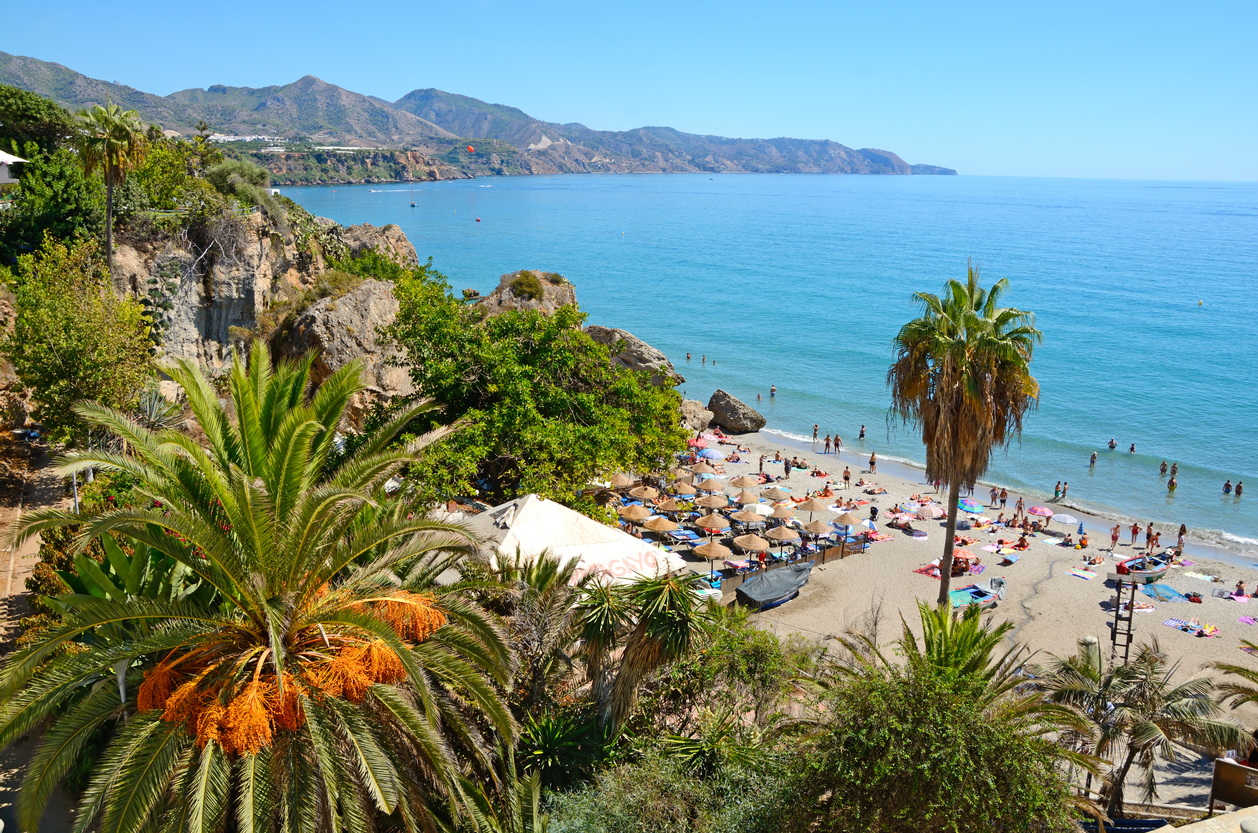
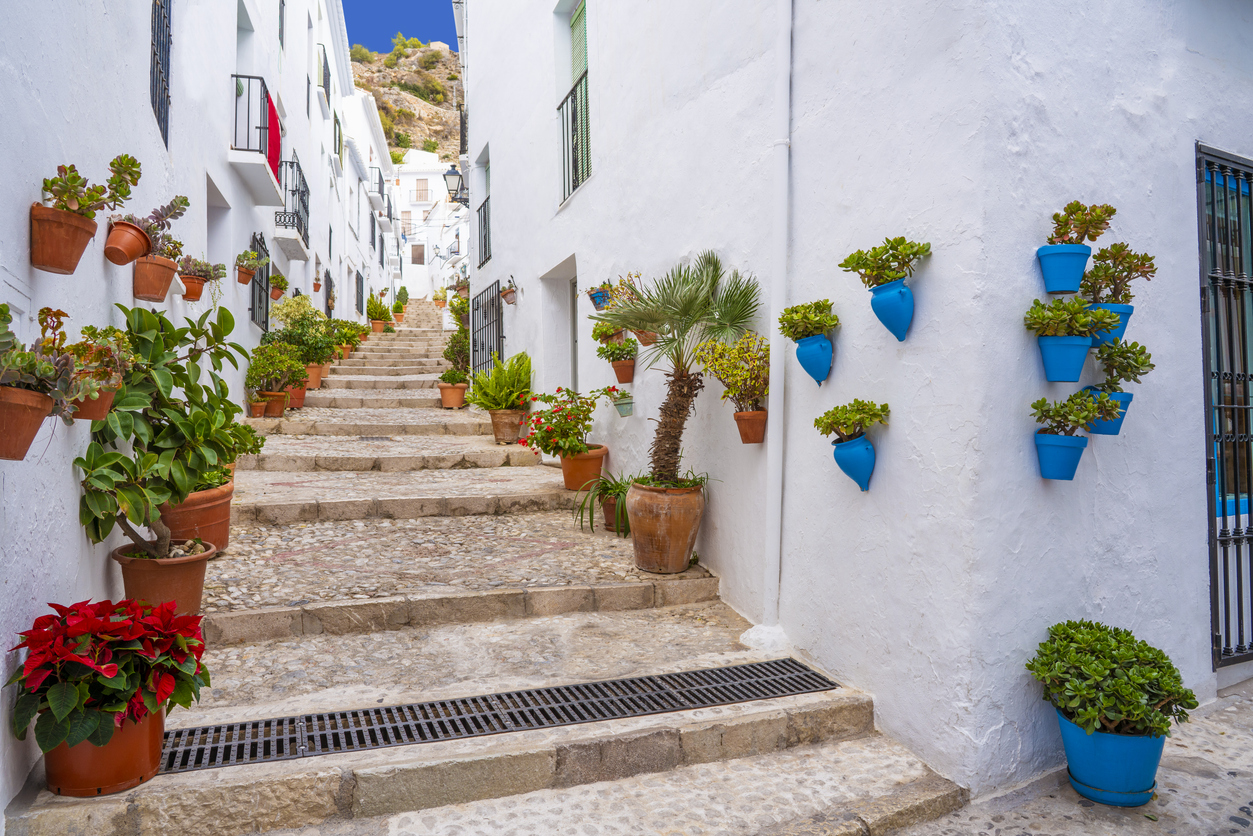
Climate
Costa del Sol boasts a Mediterranean climate with over 300 days of sunshine per year. The average annual temperature is around 18-20°C (64-68°F), with hot summers and mild winters. This favorable weather is a major draw for retirees looking for a sunny and warm environment year-round.
Healthcare
Spain’s healthcare system is ranked among the best in the world. Costa del Sol, particularly in the larger towns, offers excellent healthcare facilities. Public healthcare is available to residents and offers high-quality services. Private healthcare is also widely available, with many English-speaking doctors and specialists. Major hospitals in the region include Hospital Costa del Sol in Marbella and the Regional University Hospital in Málaga.
Main Towns
-
Marbella
- Pros: Renowned for its luxury lifestyle, beautiful beaches, golf courses, and vibrant nightlife. Excellent healthcare facilities and a large international community.
- Cons: Higher cost of living compared to other areas in Costa del Sol.
-
Málaga
- Pros: Rich in culture with numerous museums, historic sites, and a lively city atmosphere. Lower cost of living compared to Marbella.
- Cons: Busy and crowded, particularly during the tourist season.
-
Fuengirola
- Pros: Affordable living, good public transportation, and a sizable expat community. Known for its long beaches and relaxed atmosphere.
- Cons: Can be crowded and touristy, especially in the summer.
-
Estepona
- Pros: Quaint and charming with a more traditional Spanish feel. Beautiful beaches and affordable living.
- Cons: Smaller and less cosmopolitan than Marbella or Málaga.
Cost of Living
Renting
- One-bedroom apartment in city center: €600-€800 per month
- One-bedroom apartment outside city center: €400-€600 per month
Buying
- Price per square meter in city center: €2,500-€4,000
- Price per square meter outside city center: €1,500-€2,500
Yearly Budget (for a couple)
- Renting: €18,000-€24,000 (including rent, utilities, groceries, transportation, and leisure)
- Buying: €15,000-€20,000 (excluding property purchase costs)
Property Taxes and Mortgage Rates
- Property Taxes: Generally, property tax in Spain ranges from 0.3% to 0.6% of the property’s cadastral value.
- Mortgage Rates: As of 2024, mortgage rates in Spain typically range from 2% to 4%, depending on the type of mortgage and the borrower’s profile.
Summary
Costa del Sol is an attractive destination for retirees due to its favorable climate, excellent healthcare, and diverse living options. While Marbella offers a luxurious lifestyle at a higher cost, towns like Fuengirola and Estepona provide more affordable living with a relaxed atmosphere. With a reasonable yearly budget, retirees can enjoy a comfortable life whether they choose to rent or buy a property.
Costa Blanca
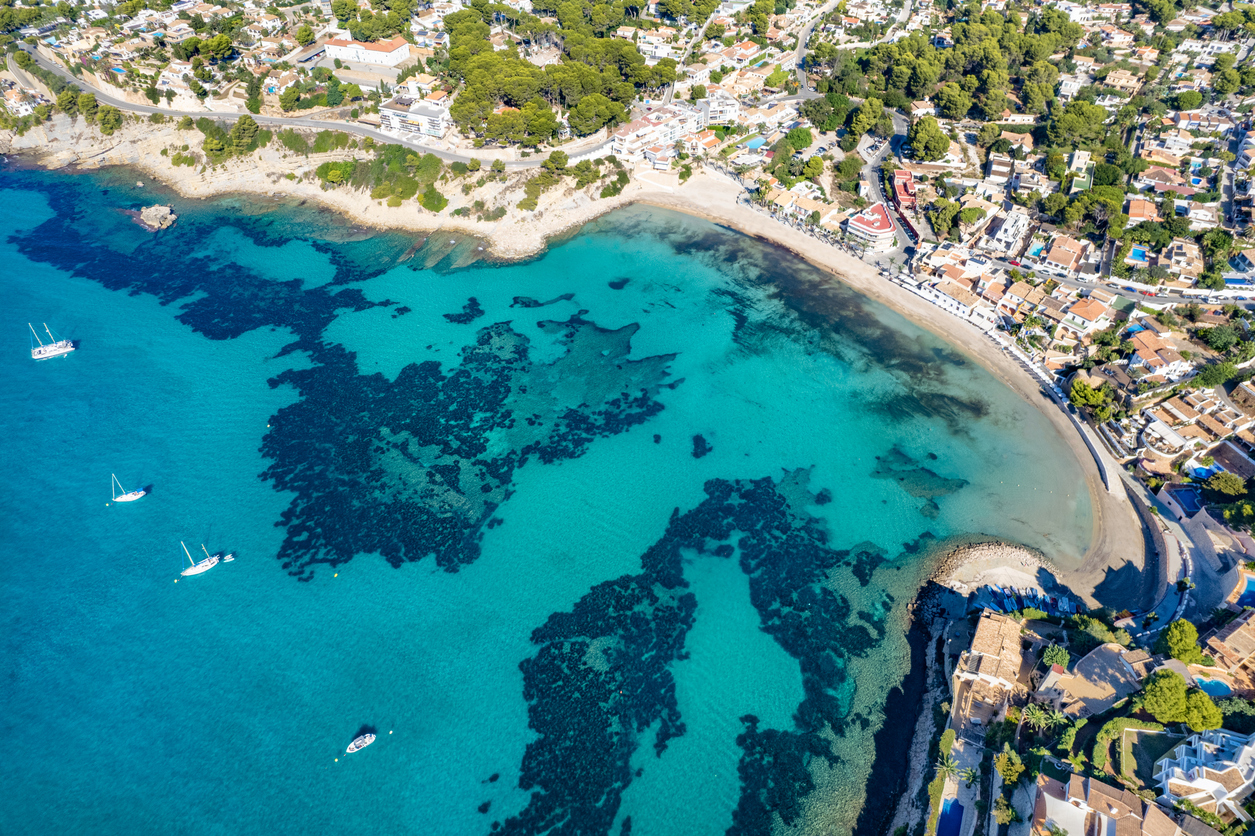
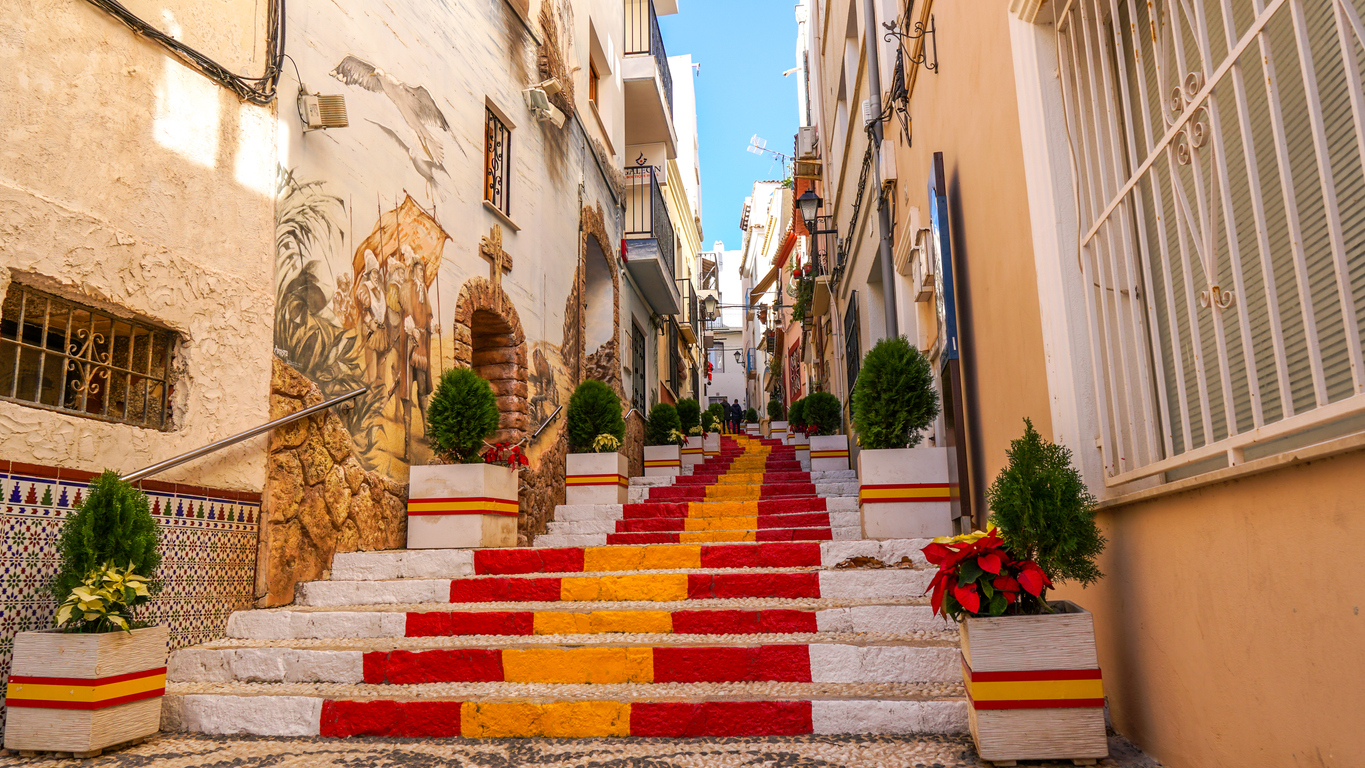
Climate
Costa Blanca enjoys a Mediterranean climate with hot summers and mild winters. It has more than 300 sunny days per year, making it an ideal location for retirees seeking warmth and sunshine year-round.
Healthcare
Costa Blanca offers excellent healthcare facilities, with a combination of public and private hospitals. The public healthcare system in Spain is highly rated, and private healthcare provides additional options with English-speaking staff. Major hospitals include Hospital Universitario de San Juan and HLA Vistahermosa in Alicante.
Main Towns
-
Alicante
- Pros: A vibrant city with beautiful beaches, rich history, and excellent healthcare facilities. It has a large international community and various cultural events.
- Cons: Can be busy and crowded, particularly during the tourist season.
-
Benidorm
- Pros: Known for its stunning beaches, lively nightlife, and numerous amenities. Popular with British retirees.
- Cons: Highly touristic and can be crowded, especially in the summer.
-
Javea
- Pros: Offers a more tranquil lifestyle with beautiful beaches, a charming old town, and a strong expat community. Excellent for outdoor activities like hiking and water sports.
- Cons: Less cosmopolitan than larger cities like Alicante.
-
Torrevieja
- Pros: Affordable living with a relaxed atmosphere. Known for its salt lakes, which are said to have health benefits. It has a large expat community.
- Cons: Can be quieter and less lively than other towns.
Cost of Living
Renting
- One-bedroom apartment in city center: €500-€700 per month
- One-bedroom apartment outside city center: €300-€500 per month
Buying
- Price per square meter in city center: €2,000-€3,500
- Price per square meter outside city center: €1,200-€2,500
Yearly Budget (for a couple)
- Renting: €15,000-€20,000 (including rent, utilities, groceries, transportation, and leisure)
- Buying: €12,000-€18,000 (excluding property purchase costs)
Property Taxes and Mortgage Rates
- Property Taxes: Generally, property tax in Spain ranges from 0.3% to 0.6% of the property’s cadastral value.
- Mortgage Rates: As of 2024, mortgage rates in Spain typically range from 2% to 4%, depending on the type of mortgage and the borrower’s profile.
Summary
Costa Blanca is a desirable destination for retirees due to its pleasant climate, excellent healthcare, and varied living options. Cities like Alicante offer a vibrant lifestyle, while towns like Javea and Torrevieja provide a more relaxed environment. With a reasonable yearly budget, retirees can enjoy a comfortable life whether they choose to rent or buy a property.
Balearic Islands
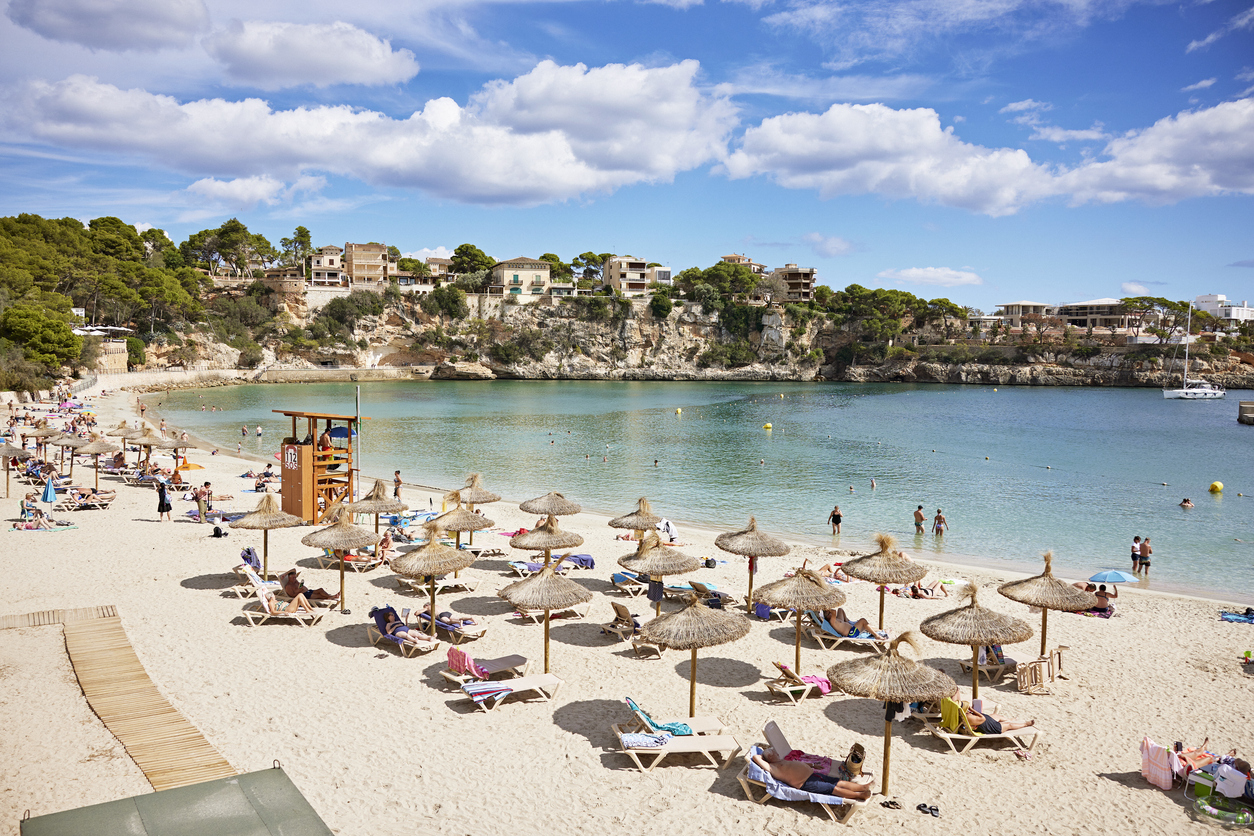
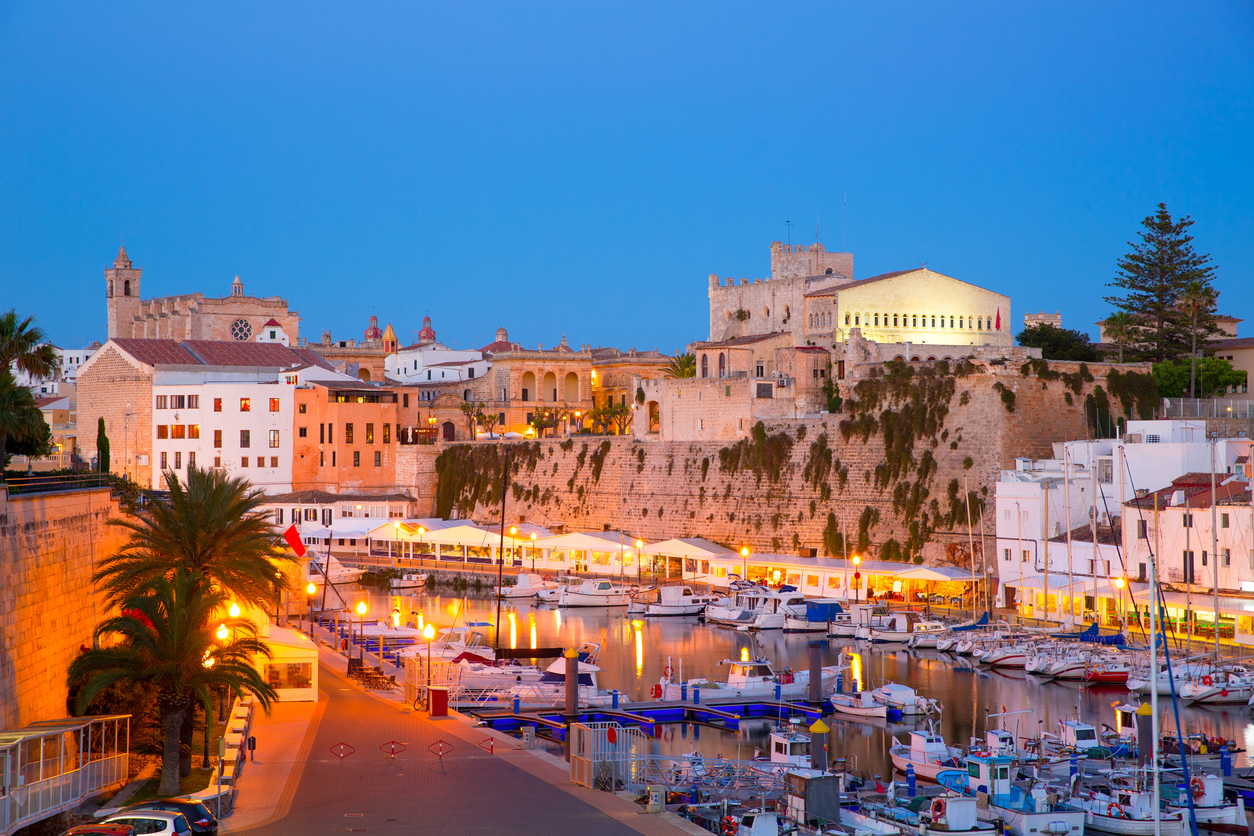
Climate
The Balearic Islands enjoy a Mediterranean climate with hot, dry summers and mild winters. The average annual temperature ranges from 16-18°C (60-64°F). The islands receive plenty of sunshine, making them a popular destination for those seeking a warm and sunny environment year-round.
Healthcare
The Balearic Islands have excellent healthcare facilities, with both public and private hospitals available. The public healthcare system is highly regarded, and there are many private healthcare options with English-speaking doctors and specialists. Major hospitals include Hospital Universitari Son Espases in Mallorca and Hospital Can Misses in Ibiza.
Main Towns
-
Palma de Mallorca
- Pros: A vibrant city with a rich cultural heritage, beautiful beaches, and excellent healthcare facilities. It has a large expat community and various cultural events.
- Cons: Can be busy and crowded, especially during the tourist season.
-
Ibiza Town
- Pros: Known for its lively nightlife, beautiful beaches, and historic old town. Popular with younger retirees looking for an active social scene.
- Cons: Can be crowded and expensive, particularly in peak season.
-
Mahón
- Pros: Offers a more tranquil lifestyle with beautiful harbor views, a charming old town, and a strong expat community. Excellent for boating and outdoor activities.
- Cons: Less cosmopolitan than larger cities like Palma.
-
Santa Eulalia del Río
- Pros: Known for its relaxed atmosphere, beautiful beaches, and vibrant cultural scene. It has a large expat community and excellent dining options.
- Cons: Can be quieter and less lively than other towns.
Cost of Living
Renting
- One-bedroom apartment in city center: €700-€1,000 per month
- One-bedroom apartment outside city center: €500-€800 per month
Buying
- Price per square meter in city center: €3,000-€5,000
- Price per square meter outside city center: €2,000-€3,500
Yearly Budget (for a couple)
- Renting: €20,000-€28,000 (including rent, utilities, groceries, transportation, and leisure)
- Buying: €18,000-€25,000 (excluding property purchase costs)
Property Taxes and Mortgage Rates
- Property Taxes: Generally, property tax in Spain ranges from 0.3% to 0.6% of the property’s cadastral value.
- Mortgage Rates: As of 2024, mortgage rates in Spain typically range from 2% to 4%, depending on the type of mortgage and the borrower’s profile.
Summary
The Balearic Islands are an attractive destination for retirees due to their favorable climate, excellent healthcare, and diverse living options. Palma de Mallorca offers a vibrant lifestyle, while towns like Mahón and Santa Eulalia del Río provide a more relaxed environment. With a reasonable yearly budget, retirees can enjoy a comfortable life whether they choose to rent or buy a property.
Costa Tropical
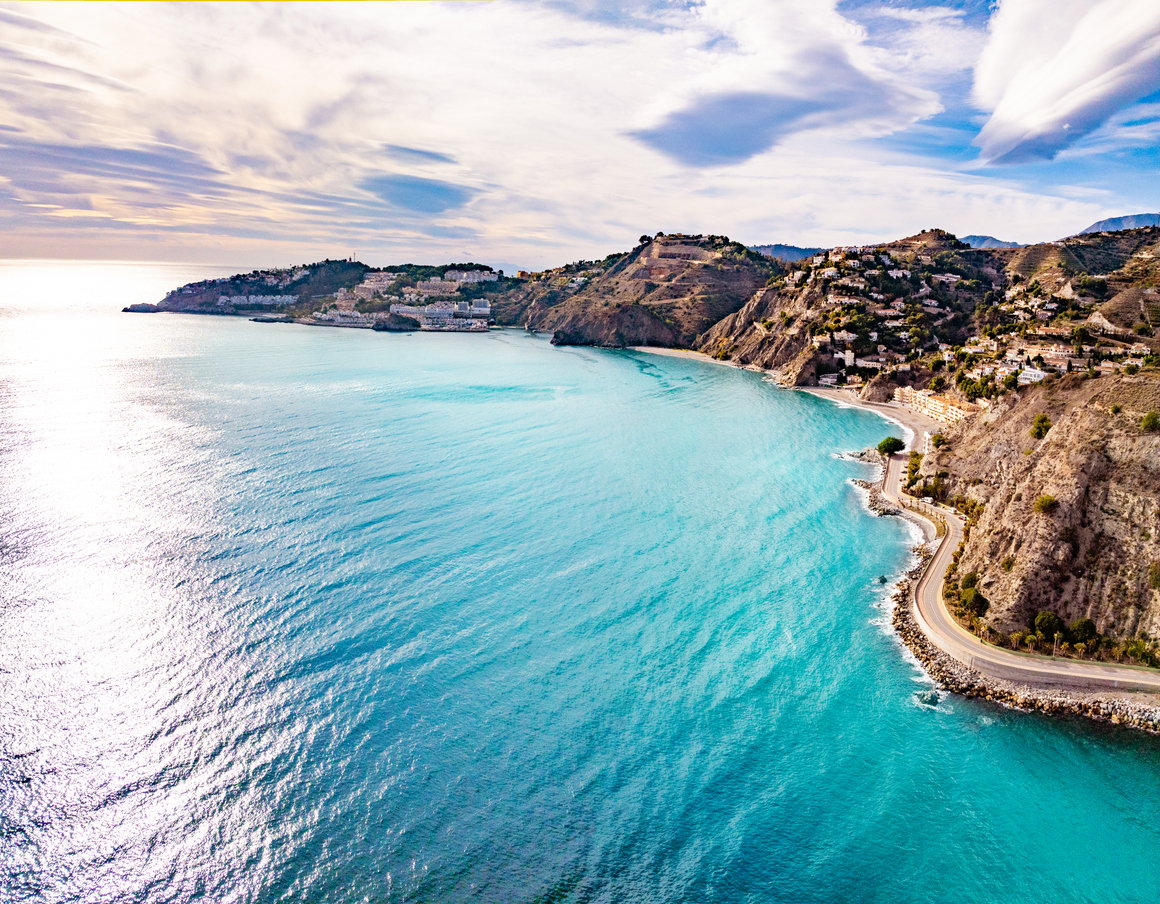
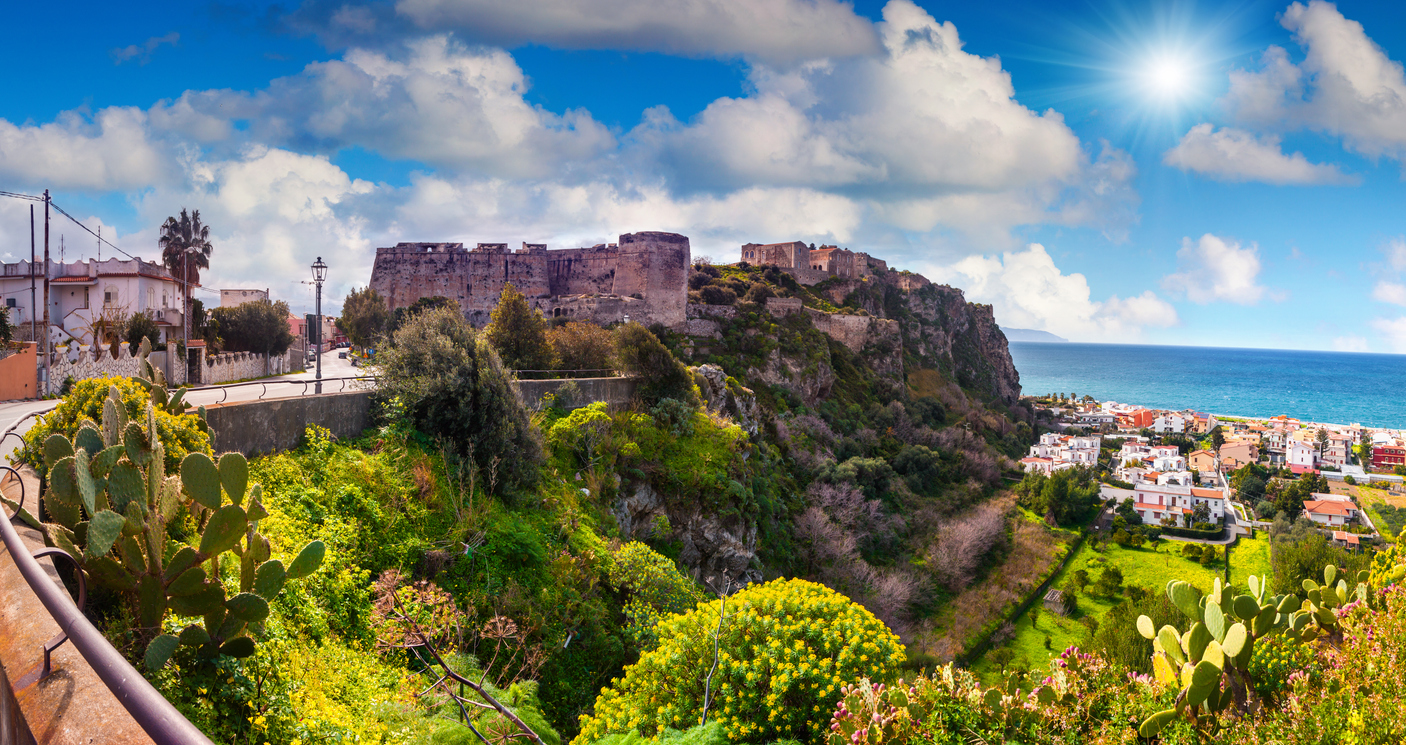
Climate
Costa Tropical enjoys a subtropical climate with hot summers and mild winters. The average annual temperature is around 20°C (68°F), with over 320 sunny days per year. This climate is ideal for retirees looking for warmth and sunshine year-round.
Healthcare
Costa Tropical offers excellent healthcare facilities, with both public and private hospitals available. The public healthcare system in Spain is highly regarded, and there are many private healthcare options with English-speaking doctors and specialists. Major hospitals include Hospital Santa Ana in Motril and Hospital Comarcal de la Axarquía in Vélez-Málaga.
Main Towns
-
Almuñécar
- Pros: A charming town with beautiful beaches, rich history, and a relaxed atmosphere. It has a large expat community and various cultural events.
- Cons: Can be quieter and less lively than larger cities.
-
Motril
- Pros: Known for its port, beautiful beaches, and affordable living. It has good healthcare facilities and a growing expat community.
- Cons: Less touristy and more industrial compared to other towns in Costa Tropical.
-
Salobreña
- Pros: Offers a picturesque setting with a castle, charming old town, and beautiful beaches. It is known for its friendly community and relaxed lifestyle.
- Cons: Smaller and less cosmopolitan than larger cities.
-
Nerja
- Pros: Famous for its stunning beaches, the Balcon de Europa viewpoint, and the Nerja Caves. It has a vibrant expat community and various cultural events.
- Cons: Can be crowded and touristy, especially in the summer.
Cost of Living
Renting
- One-bedroom apartment in city center: €400-€600 per month
- One-bedroom apartment outside city center: €300-€500 per month
Buying
- Price per square meter in city center: €1,500-€2,500
- Price per square meter outside city center: €1,200-€2,000
Yearly Budget (for a couple)
- Renting: €12,000-€18,000 (including rent, utilities, groceries, transportation, and leisure)
- Buying: €10,000-€15,000 (excluding property purchase costs)
Property Taxes and Mortgage Rates
- Property Taxes: Generally, property tax in Spain ranges from 0.3% to 0.6% of the property’s cadastral value.
- Mortgage Rates: As of 2024, mortgage rates in Spain typically range from 2% to 4%, depending on the type of mortgage and the borrower’s profile.
Summary
Costa Tropical is an attractive destination for retirees due to its favorable climate, excellent healthcare, and diverse living options. Towns like Almuñécar and Salobreña offer a relaxed lifestyle, while places like Motril provide more affordable living. With a reasonable yearly budget, retirees can enjoy a comfortable life whether they choose to rent or buy a property.

